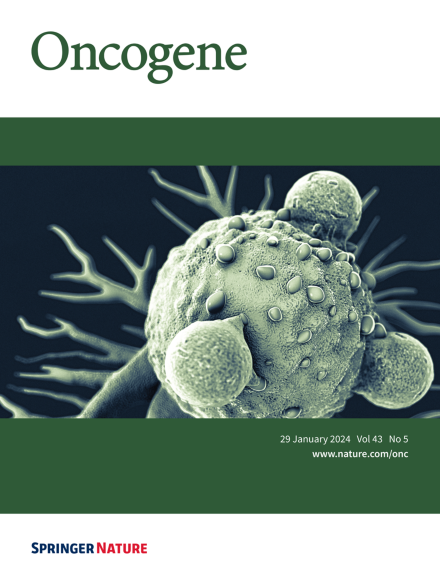PRMT5-regulated splicing of DNA repair genes drives chemoresistance in breast cancer stem cells
IF 6.9
1区 医学
Q1 BIOCHEMISTRY & MOLECULAR BIOLOGY
引用次数: 0
Abstract
Breast cancer stem cells (BCSCs) are a rare cell population that is responsible for tumour initiation, metastasis and chemoresistance. Despite this, the mechanism by which BCSCs withstand genotoxic stress is largely unknown. Here, we uncover a pivotal role for the arginine methyltransferase PRMT5 in mediating BCSC chemoresistance by modulating DNA repair efficiency. Mechanistically, we identify PRMT5 as a major regulator of DNA damage response (DDR) gene splicing in BCSCs, particularly those integral to the Fanconi Anaemia and homologous recombination pathways, with PRMT5 inhibition synergising with chemotherapy to promote BCSC apoptosis. A comparison of BCSCs and their bulk cell progeny identified some shared (ATM, DDX11, EXO1, FAN1, SLX4) but many unique (ATR, RAD17, RAD51D, RUVBL1) PRMT5-dependent alternative DDR splicing events. Surprisingly, these skipped exons and retained intron events rarely lead to substantial gene expression repression, suggesting that PRMT5 inhibition predominantly results in nuclear detention of intron-containing transcripts and the production of non-canonical isoforms with compromised protein function. Since many genes within the same DDR pathway undergo deregulated splicing, this study thus reveals additional points of vulnerability and alternative combination drug strategies that could improve the therapeutic efficacy of PRMT5 inhibitors to promote BCSC eradication.

prmt5调控的DNA修复基因剪接驱动乳腺癌干细胞的化疗耐药。
乳腺癌干细胞(BCSCs)是一种罕见的细胞群,负责肿瘤的起始,转移和化疗耐药。尽管如此,bscs抵御基因毒性应激的机制在很大程度上是未知的。在这里,我们发现精氨酸甲基转移酶PRMT5在通过调节DNA修复效率介导BCSC化学耐药中的关键作用。在机制上,我们发现PRMT5是BCSC中DNA损伤反应(DDR)基因剪接的主要调节因子,特别是那些与范可尼贫血和同源重组途径相关的基因剪接,PRMT5抑制与化疗协同促进BCSC凋亡。比较BCSCs和它们的体细胞后代,发现了一些共享的(ATM, DDX11, EXO1, FAN1, SLX4)但许多独特的(ATR, RAD17, RAD51D, RUVBL1) prmt5依赖的替代DDR剪接事件。令人惊讶的是,这些跳过的外显子和保留的内含子事件很少导致实质性的基因表达抑制,这表明PRMT5抑制主要导致含内含子转录本的核滞留和蛋白质功能受损的非规范亚型的产生。由于同一DDR通路内的许多基因剪接不受调控,因此本研究揭示了额外的易损点和替代联合药物策略,可以提高PRMT5抑制剂的治疗效果,促进BCSC的根除。
本文章由计算机程序翻译,如有差异,请以英文原文为准。
求助全文
约1分钟内获得全文
求助全文
来源期刊

Oncogene
医学-生化与分子生物学
CiteScore
15.30
自引率
1.20%
发文量
404
审稿时长
1 months
期刊介绍:
Oncogene is dedicated to advancing our understanding of cancer processes through the publication of exceptional research. The journal seeks to disseminate work that challenges conventional theories and contributes to establishing new paradigms in the etio-pathogenesis, diagnosis, treatment, or prevention of cancers. Emphasis is placed on research shedding light on processes driving metastatic spread and providing crucial insights into cancer biology beyond existing knowledge.
Areas covered include the cellular and molecular biology of cancer, resistance to cancer therapies, and the development of improved approaches to enhance survival. Oncogene spans the spectrum of cancer biology, from fundamental and theoretical work to translational, applied, and clinical research, including early and late Phase clinical trials, particularly those with biologic and translational endpoints.
 求助内容:
求助内容: 应助结果提醒方式:
应助结果提醒方式:


